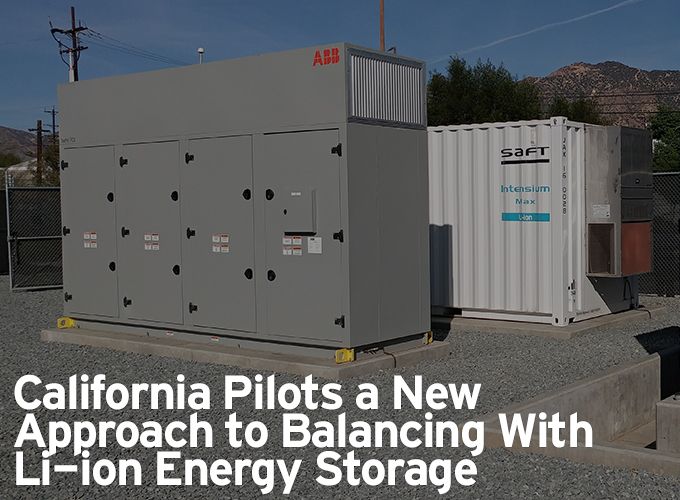This pilot energy storage system (ESS) offers the near-instantaneous ability to respond to changes in load. It will demonstrate how GWP can achieve an unprecedented capacity to regulate its transmission system and ensure a reliable customer supply.
Contributed by | Saft Batteries
California municipal utility Glendale Water & Power (GWP) has deployed a megawatt-scale battery, based on Saft’s lithium-ion (Li-ion) technology, at its Grandview Substation. This pilot energy storage system (ESS) offers the near-instantaneous ability to respond to changes in load. It will demonstrate how GWP can achieve an unprecedented capacity to regulate its transmission system and ensure a reliable customer supply.
Integrating renewable energy
GWP is the local, publicly owned, electric utility for the City of Glendale. It provides electric services to nearly 88,000 retail customers. GWP has a summer load peak of approximately 300 MW and an annual load obligation of 1.1 million MWh.
The utility has made significant progress in meeting the requirements of the California Renewable Portfolio Standard (RPS) and Greenhouse Gas reduction programs. Currently, at least 25 percent of its annual energy requirement is derived from renewable energy sources. GWP is continuously evaluating investment opportunities to ensure its complies with the increasing RPS targets, effectively integrate renewable resources, and maintain an efficient and reliable electric system. This includes the adoption of grid-scale energy storage.
Data modelling for an ACE solution
Much of the power supplied to Glendale is brought in on a single transmission line, or interconnection, from the Los Angeles Department of Water & Power (LADWP). GWP provides LADWP with a day-ahead forecast of power flows for each 15-minute period, and is working to minimize the difference between forecast and actual power levels, also known as Area Control Error (ACE). Saft has worked with GWP and Skylar, the energy-marketing and consulting company focused on medium to long-term structured energy transactions, to model several months of ACE data.
The analysis showed showed that Saft’s Intensium® Max+ 20M containerized solution would effectively control the ACE to within an acceptable margin.
Preparing the way for a full-scale ESS installation
The current ESS has a battery rating of 950 kWh with a typical response time of 150 milliseconds and a maximum discharge capacity of 2 MW (up to 1.67 MW in ACE correction mode). In addition to the ACE functionality, the ESS will provide transmission system regulation and black-start capability.
The current installation is a scaleable pilot for a larger ESS, designed to follow an ACE signal provided by GWP’s control system and provide a scaled response. GWP and Saft will analyze operating data for the scaled response to verify the effectiveness of the system and evaluate battery aging.
Success with this pilot system will provide a sound basis for GWP to deploy the full-scale ESS to facilitate the widespread integration of renewables, while helping to defer major investments in reinforcing its transmission network infrastructure.
William O. Perkins III, CEO and President of Skylar, said:
“We are very pleased with the completion and commissioning of the ESS at Grandview substation. This system is now one of the fastest responding storage systems for any municipal utility in Southern California. It gives GWP a flexible, state-of-the-art resource to meet its customers’ needs today and in the years ahead. Collaboration with Saft was key in helping GWP to optimize its operations.”
The content & opinions in this article are the author’s and do not necessarily represent the views of AltEnergyMag
Comments (0)
This post does not have any comments. Be the first to leave a comment below.
Featured Product


